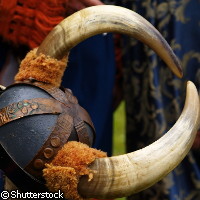The impact language has on immigration and integration
How English is the English language? A British researcher tackled this question and found that the Viking attacks from 793 AD resulted in a number of terms, such as 'want' and 'ugly', being borrowed from Old Norse. The research findings shed light on the sociolinguistic relationship between the invading and invaded cultures. Dr Sara Pons-Sanz from the School of English at the University of Nottingham in the UK examined terms - both those still in use and those long forgotten - that moved from Old Norse to Old English. The study tracked when and where the words appear in surviving texts from the Old English period. The invaders that eventually settled in Britain and assimilated into the culture cemented their feet on the land through the use of words, not trade items like spices and furs. According to the researcher, the loanwords add weight to the theory that the invaders were quick to integrate with their new culture. Past evidence also suggests that the adoption of daily Old Norse terms, which happened at a speedy pace, occurred because the cultures lived close to each other. Another interesting finding is a comparison of Old Norse loanwords with French ones; the researcher found that despite more than 10 000 French loanwords being currently in use, against some 1 000 Scandinavian, the French words are linked to law, government, high culture and hunting cases. The Royal Court used the French language after William the Conqueror, the Duke of Normandy, invaded and conquered England in 1066. According to Dr Pons-Sanz, Old Norse likely died out in England by the 12th century, thus hinting at a total cultural assimilation by the Vikings. The study also showed that most loanwords are nouns and adjectives; 'open-ended categories' that can be adapted into a language without a great deal of fuss. It should be noted that the pronoun 'they' is Old Norse in origin and in wide use in English today. Dr Pons-Sanz said pronouns are a 'closed category', and consequently adapting them into a new language takes longer. So this research suggests that a connection between the two languages and cultures exists; this was not the case with former or later invasions. Thanks to her diligence, Dr Pons-Sanz was able to clean up the list of English terms that people believe came from Old Norse. Her original texts comprised literary texts, homilies, legal codes, charters and inscriptions. The university researcher compared the texts chronologically and dialectally in order to track the introduction and integration of the words. 'Language is constantly evolving; loanwords are being assimilated into English - and other languages - all the time,' Dr Pons-Sanz remarked. 'By examining the types of words that are adopted, we can gain insight into the relationships between different cultures.'
Countries
United Kingdom



